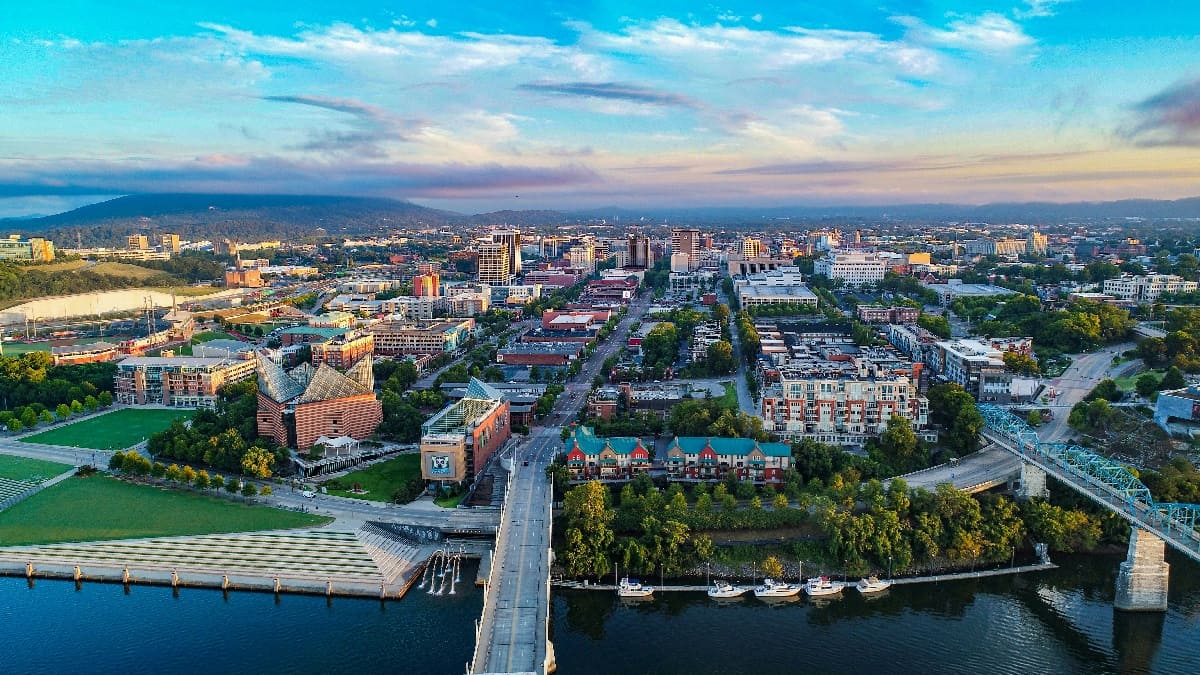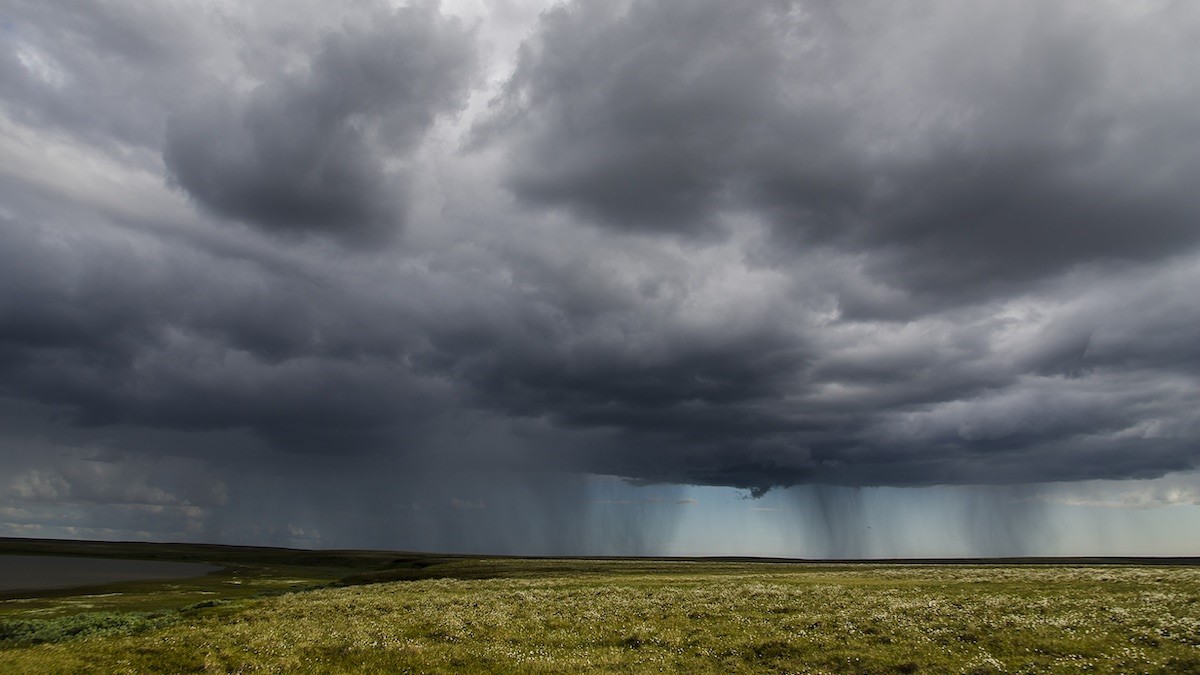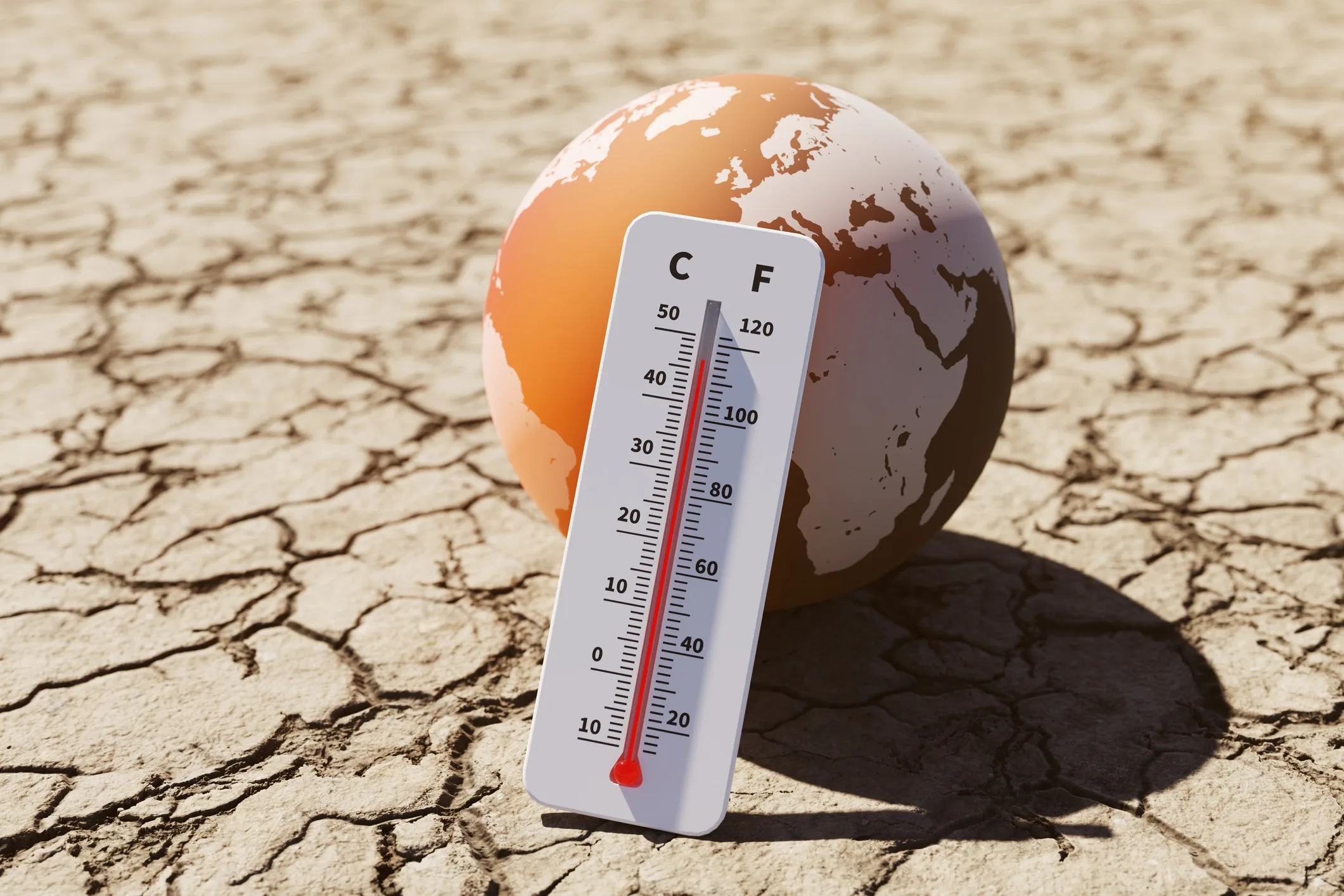Home>Weather and Climate>Chattanooga’s Average Temperature: A Comprehensive Overview


Weather and Climate
Chattanooga’s Average Temperature: A Comprehensive Overview
Published: March 1, 2024
Discover Chattanooga's average temperature and climate patterns. Gain a comprehensive overview of the city's weather and climate. Plan your visit with confidence.
(Many of the links in this article redirect to a specific reviewed product. Your purchase of these products through affiliate links helps to generate commission for Temperatures.com, at no extra cost. Learn more)
Table of Contents
Introduction
Chattanooga, nestled in the southeastern region of the United States, is renowned for its scenic beauty, rich history, and diverse climate. The average temperature in Chattanooga is a key indicator of the prevailing weather conditions, influencing daily life, outdoor activities, and the region's ecosystem. Understanding the factors that contribute to Chattanooga's average temperature, historical trends, seasonal variations, and the impact of climate change is crucial for residents, visitors, and environmental enthusiasts alike.
The average temperature in Chattanooga is influenced by a myriad of factors, including geographical location, elevation, proximity to bodies of water, and prevailing wind patterns. These elements interact to shape the region's climate, resulting in distinct temperature patterns throughout the year. By delving into the historical trends of Chattanooga's average temperature, we can gain valuable insights into the region's climatic evolution and the potential implications for the future.
Moreover, exploring the seasonal variations in Chattanooga's average temperature provides a deeper understanding of the unique weather patterns experienced during different times of the year. From the balmy days of summer to the crisp chill of winter, each season brings its own character to Chattanooga's climate, impacting everything from outdoor recreation to agricultural practices.
In recent years, the impact of climate change on Chattanooga's average temperature has become a topic of increasing significance. Observing the shifts in temperature trends and their potential ramifications for the local environment and communities underscores the importance of addressing climate-related challenges and fostering sustainable practices.
As we embark on a comprehensive exploration of Chattanooga's average temperature, we will uncover the intricate interplay of natural and anthropogenic influences that shape the region's climate. By delving into the multifaceted dimensions of Chattanooga's average temperature, we can gain a deeper appreciation for the dynamic nature of the city's climate and the broader implications for environmental stewardship and community resilience.
Factors Affecting Chattanooga's Average Temperature
Chattanooga's average temperature is influenced by a complex interplay of geographical, meteorological, and environmental factors. These elements converge to shape the region's climate, contributing to the diverse and dynamic temperature patterns experienced throughout the year.
-
Geographical Location: Situated in the southeastern United States, Chattanooga's geographical location plays a pivotal role in determining its average temperature. The city's proximity to the Appalachian Mountains and the Tennessee River significantly influences its climate. The surrounding topography can act as a barrier to weather systems, impacting temperature variations within the region.
-
Elevation: Chattanooga's elevation, averaging around 680 feet above sea level, contributes to its temperature dynamics. As elevation increases, the air becomes cooler, leading to variations in temperature across different parts of the city. This elevation-driven temperature diversity adds a unique dimension to Chattanooga's climate, shaping local weather patterns and microclimates.
-
Proximity to Bodies of Water: The Tennessee River, which meanders through Chattanooga, exerts a moderating influence on the city's temperature. Bodies of water, such as rivers and lakes, have a buffering effect on temperature extremes. They can absorb and release heat more slowly than land, leading to milder temperatures in their vicinity. The presence of the Tennessee River thus contributes to the moderation of Chattanooga's temperature fluctuations.
-
Prevailing Wind Patterns: Wind patterns, influenced by regional and global atmospheric dynamics, impact Chattanooga's average temperature. The direction and speed of winds can transport air masses with varying temperatures, influencing the city's weather conditions. Additionally, wind patterns interact with the local topography, leading to temperature differentials across Chattanooga's landscape.
-
Urban Heat Island Effect: Urbanization and the proliferation of infrastructure in Chattanooga can contribute to the urban heat island effect, wherein built-up areas experience higher temperatures compared to surrounding rural areas. The presence of concrete, asphalt, and other heat-absorbing materials can elevate temperatures within the city, particularly during the summer months.
-
Vegetation and Land Use: The extent of green spaces, vegetation cover, and land use practices in Chattanooga can impact its average temperature. Trees and vegetation provide shade and evaporative cooling, potentially mitigating temperature extremes in urban and suburban areas. Conversely, land use changes, such as deforestation or urban expansion, can alter local temperature patterns.
Understanding these diverse factors that influence Chattanooga's average temperature provides valuable insights into the city's climate dynamics. By recognizing the intricate interplay of geographical, environmental, and anthropogenic elements, we can appreciate the multifaceted nature of Chattanooga's temperature regime and its broader implications for the region's residents and ecosystems.
Historical Trends in Chattanooga's Average Temperature
The historical trends in Chattanooga's average temperature unveil a compelling narrative of climatic fluctuations and long-term patterns that have shaped the city's environmental landscape. Over the past century, Chattanooga has witnessed notable variations in its average temperature, reflecting the interplay of natural climatic cycles and potential anthropogenic influences.
From the early 20th century to the present day, historical temperature records depict discernible trends that offer valuable insights into Chattanooga's climatic evolution. Analyses of long-term temperature data reveal fluctuations, including periods of relative stability and notable shifts in average temperature trends. These historical patterns serve as a lens through which we can discern the dynamic nature of Chattanooga's climate and its susceptibility to external influences.
The mid-20th century saw a phase of relative temperature stability, with average temperature trends exhibiting consistency over several decades. However, as the latter half of the century unfolded, a discernible uptick in average temperatures became evident, signaling a departure from previous norms. This shift coincided with broader global discussions on climate change and its potential ramifications for regional climates.
In recent decades, Chattanooga has experienced a discernible warming trend, characterized by an increase in average temperatures across seasons. The summers have become notably warmer, with higher frequency of heatwaves, while winters have exhibited milder conditions compared to historical records. These temperature shifts align with broader global patterns associated with climate change, prompting heightened awareness of the potential implications for Chattanooga's environment and communities.
Moreover, the historical trends in Chattanooga's average temperature underscore the importance of long-term climate monitoring and the compilation of robust datasets. By analyzing historical temperature records, climatologists and researchers can discern patterns, identify anomalies, and assess the potential drivers of temperature fluctuations. This historical perspective provides a crucial foundation for understanding the broader context of Chattanooga's climate and its susceptibility to external forces.
As we navigate the complexities of historical temperature trends in Chattanooga, it becomes evident that the city's climate is subject to a dynamic interplay of natural variability and potential anthropogenic influences. By delving into the historical fabric of Chattanooga's temperature patterns, we gain a deeper appreciation for the city's climatic narrative and the imperative of proactive climate stewardship.
The historical trends in Chattanooga's average temperature serve as a testament to the intricate interplay of natural and human-induced factors that shape the city's climate. By examining these historical patterns, we can glean valuable insights into the dynamic nature of Chattanooga's temperature regime and the potential implications for the region's environmental resilience and sustainability.
Seasonal Variations in Chattanooga's Average Temperature
The seasonal variations in Chattanooga's average temperature paint a vivid portrait of the city's dynamic climate, showcasing distinct temperature patterns that define each season. From the balmy embrace of summer to the crisp chill of winter, Chattanooga experiences a diverse spectrum of temperatures throughout the year, shaping the rhythm of life and the natural environment.
Summer:
During the summer months, Chattanooga basks in warm and often humid conditions, with average temperatures typically ranging from the high 80s to the low 90s Fahrenheit. The city's proximity to the Tennessee River and surrounding bodies of water contributes to the moderation of extreme heat, offering a reprieve from scorching temperatures. However, occasional heatwaves can elevate the mercury, prompting residents and visitors to seek refuge in shaded parks or cool indoor spaces. The summer season sets the stage for outdoor festivals, recreational activities along the riverfront, and the vibrant buzz of al fresco dining in downtown Chattanooga.
Autumn:
As summer transitions into autumn, Chattanooga undergoes a captivating metamorphosis characterized by a symphony of colors and a gradual descent in temperatures. The average temperature gradually recedes from the high 70s to the mid-60s Fahrenheit, creating an idyllic backdrop for fall foliage and outdoor excursions. The crisp, refreshing air beckons locals and tourists alike to explore the city's scenic trails, embark on leisurely river cruises, and savor the seasonal delights of pumpkin patches and harvest festivals. Autumn in Chattanooga embodies a harmonious blend of natural beauty and moderate temperatures, inviting all to revel in the city's autumnal splendor.
Winter:
As winter unfolds, Chattanooga experiences a shift towards cooler temperatures, with average readings ranging from the mid-40s to the low 50s Fahrenheit. While snowfall is infrequent, the city occasionally dons a glistening mantle of snow, transforming its landscape into a winter wonderland. The brisk air carries a sense of tranquility, inviting residents and visitors to partake in seasonal festivities, including ice skating at the outdoor rink in downtown Chattanooga and admiring the enchanting holiday lights adorning the city's streets. The winter season bestows a serene charm upon Chattanooga, offering a respite from the bustling energy of warmer months.
Spring:
With the arrival of spring, Chattanooga awakens to a tapestry of blossoming flora and rejuvenating temperatures. The average temperature ascends from the mid-50s to the high 60s Fahrenheit, signaling the onset of outdoor adventures and the revival of nature's vibrant hues. The city's parks and botanical gardens burst into life, providing a picturesque backdrop for leisurely strolls and tranquil picnics. Spring in Chattanooga embodies a sense of renewal and vitality, inspiring residents and visitors to embrace the temperate climate and immerse themselves in the city's natural splendor.
The seasonal variations in Chattanooga's average temperature encapsulate the city's diverse climate, offering a captivating journey through the ebb and flow of temperatures across the four seasons. From the warmth of summer to the tranquility of winter, each season contributes to the rich tapestry of Chattanooga's climate, shaping experiences and fostering a deep appreciation for the city's natural allure.
Impact of Climate Change on Chattanooga's Average Temperature
The impact of climate change on Chattanooga's average temperature has emerged as a focal point of concern, reflecting the broader global discourse on the repercussions of anthropogenic influences on regional climates. Chattanooga, like many other regions, has witnessed discernible shifts in its average temperature patterns, signaling the potential imprint of climate change on its environmental landscape.
In recent decades, Chattanooga has experienced a notable warming trend, characterized by an increase in average temperatures across seasons. The summers have become notably warmer, with higher frequency of heatwaves, while winters have exhibited milder conditions compared to historical records. These temperature shifts align with broader global patterns associated with climate change, prompting heightened awareness of the potential implications for Chattanooga's environment and communities.
The warming trend observed in Chattanooga's average temperature aligns with the overarching narrative of global climate change, underpinned by the accumulation of greenhouse gases and other anthropogenic activities. The release of carbon dioxide, methane, and other greenhouse gases into the atmosphere has contributed to the intensification of the greenhouse effect, leading to the trapping of heat and subsequent warming of the planet. These global phenomena have reverberated at the regional level, manifesting in the form of altered temperature patterns and climatic dynamics in Chattanooga and its surrounding areas.
The impact of climate change on Chattanooga's average temperature extends beyond meteorological observations, permeating various facets of the city's social, economic, and environmental fabric. From potential implications for agricultural practices and water resource management to heightened concerns regarding heat-related health risks, the evolving temperature regime poses multifaceted challenges for the city's residents and policymakers.
Moreover, the influence of climate change on Chattanooga's average temperature underscores the imperative of proactive climate resilience and adaptation strategies. By acknowledging the evolving temperature dynamics and their potential ramifications, Chattanooga can prioritize initiatives aimed at mitigating heat-related vulnerabilities, enhancing urban green spaces, and fostering sustainable practices to mitigate the impact of rising temperatures.
As Chattanooga navigates the complexities of climate change and its influence on average temperature patterns, fostering a collective commitment to environmental stewardship and sustainable development becomes increasingly paramount. By acknowledging the multifaceted dimensions of climate change and its impact on Chattanooga's average temperature, the city can chart a course towards resilience, sustainability, and proactive climate action.
The impact of climate change on Chattanooga's average temperature serves as a testament to the intricate interplay of natural and human-induced factors that shape the city's climate. By examining these evolving temperature dynamics, Chattanooga can glean valuable insights into the imperative of proactive climate stewardship and the potential pathways towards a resilient and sustainable future.
Read more: Malaysia’s Yearly Temperature Overview
Conclusion
In conclusion, Chattanooga's average temperature encapsulates the intricate interplay of geographical, meteorological, and environmental factors that converge to shape the city's climate. From the verdant banks of the Tennessee River to the undulating terrain influenced by the Appalachian Mountains, Chattanooga's unique topography interacts with prevailing wind patterns, urbanization, and the broader impacts of climate change to define its temperature regime.
The historical trends in Chattanooga's average temperature unveil a compelling narrative of climatic fluctuations and long-term patterns, reflecting the interplay of natural climatic cycles and potential anthropogenic influences. As the city navigates the complexities of climate change and its influence on average temperature patterns, fostering a collective commitment to environmental stewardship and sustainable development becomes increasingly paramount.
The seasonal variations in Chattanooga's average temperature offer a captivating journey through the ebb and flow of temperatures across the four seasons, shaping experiences and fostering a deep appreciation for the city's natural allure. From the warmth of summer to the tranquility of winter, each season contributes to the rich tapestry of Chattanooga's climate, influencing outdoor activities, agricultural practices, and the overall quality of life.
The impact of climate change on Chattanooga's average temperature has emerged as a focal point of concern, reflecting the broader global discourse on the repercussions of anthropogenic influences on regional climates. The discernible warming trend observed in Chattanooga aligns with the overarching narrative of global climate change, underpinned by the accumulation of greenhouse gases and other anthropogenic activities.
As Chattanooga grapples with the evolving temperature dynamics and their potential ramifications, the city can prioritize initiatives aimed at mitigating heat-related vulnerabilities, enhancing urban green spaces, and fostering sustainable practices to mitigate the impact of rising temperatures. By acknowledging the multifaceted dimensions of climate change and its impact on Chattanooga's average temperature, the city can chart a course towards resilience, sustainability, and proactive climate action.
In essence, Chattanooga's average temperature serves as a barometer of the city's environmental resilience and its capacity to adapt to evolving climatic dynamics. By embracing a holistic approach to climate stewardship and fostering a community-wide commitment to sustainability, Chattanooga can navigate the complexities of temperature variability and climate change, paving the way for a resilient and vibrant future for generations to come.













